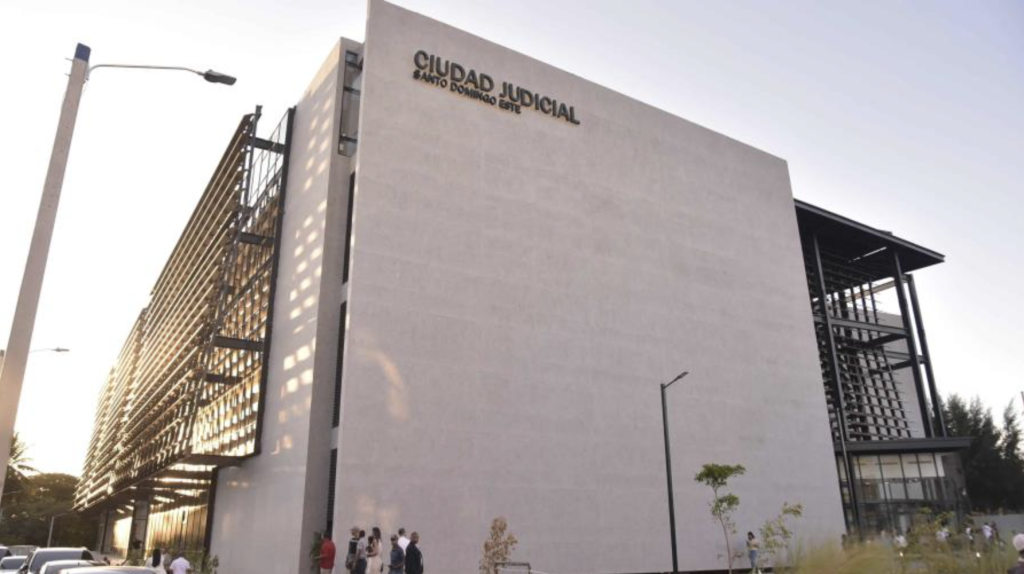
The new mega justice complex built in Santo Domingo East, the Ciudad Judicial de Santo Domingo Este is intended to be a model for the transformation of the justice facilities nationwide, said Luis Henry Molina, president of the Supreme Court of Justice during the inauguration on 23 February 2025, in the presence of President Luis Abinader. The facilities are the most modern justice center anywhere in the Dominican Republic and cost taxpayers upwards of RD$4.48 million.
The Abinader administration had inherited the construction in 2020 from the Medina administration with about 20% of the construction completed. The new justice center seeks to benefit more than 2.9 million people that live in Santo Domingo East, the most densely populated municipality in the country.
Once fully in operation, the facility will service 3,000 to 4,000 persons a day.
The justice center concentrates in separate blocks the Judiciary, the National Office of Public Defense, and the prosecutors of the Public Ministry.
The blocks designated for the Judiciary include 22 hearing rooms for criminal, civil, and labor cases, as well as a Justice of the Peace court, a user service center, a mediation center, an interview center, and 109 judge’s offices.
The Ciudad Judicial de Santo Domingo Este was built on a 15,346 square meter lot and the buildings have 62,632 meters of space on four levels. There is underground parking for 349 vehicles. The construction was contracted to Ingeniería Metálica and Constructora Rizek & Asociados.
The services will begin to be offered gradually as of the second half of 2025. At present, the tenders for the furnishing and technology equipment are underway.
The president of the Supreme Court of Justice, Luis Henry Molina, praised President Luis Abinader’s vision in bringing the Santo Domingo Judicial City to fruition. The project transforms the province from having “the worst infrastructure in the country to the best in the region,” he said. “With the opening of the Judicial City,” Molina assured, “we reaffirm the principle that should guide all transformation efforts in our system: putting people at the center of justice,” he said.
The new facility marks an end to the era of overcrowded vans transporting detainees, stuffy courtrooms, and long waits for justice. It spells the end of inhumane conditions for arrested individuals and overwhelmed judicial police struggling to manage chaotic scenes while families grieve in powerless despair.
Molina stressed that the building represents more than just a physical space; it embodies a new culture of justice based on efficiency, transparency, and dignity. “Justice will cease to be a suffocating chaos and become an efficient and dignified service for all,” he stated.
The Judicial City, according to Molina, will provide the working conditions to reduce judicial backlogs, making more likely timely responses for victims, streamlined processes, and better-equipped judges. Crucially, it underscores the principle that “justice should serve the people, not operate in isolation from society.” He concluded that inaccessible, slow, or distant justice loses its very purpose.
Read more in Spanish:
Judicial Branch
Presidency
Diario Libre
25 February 2025

